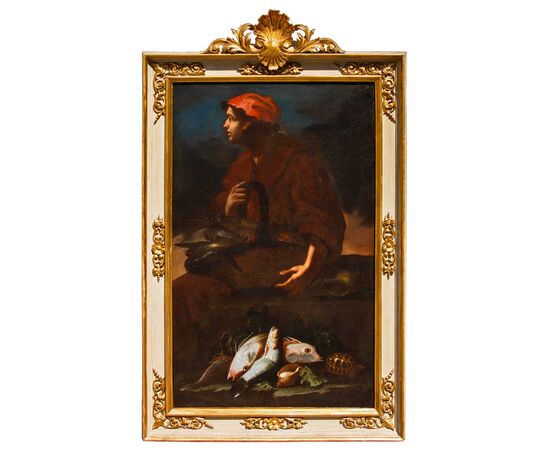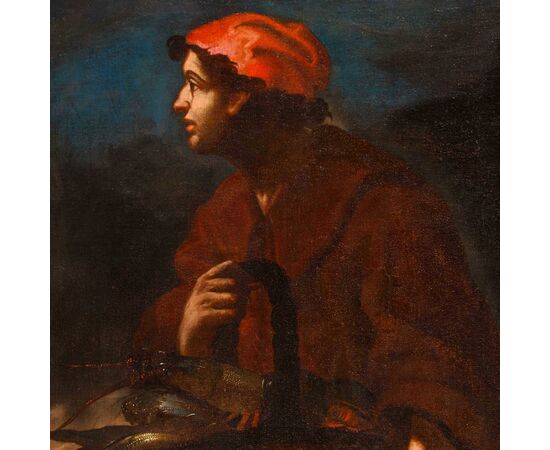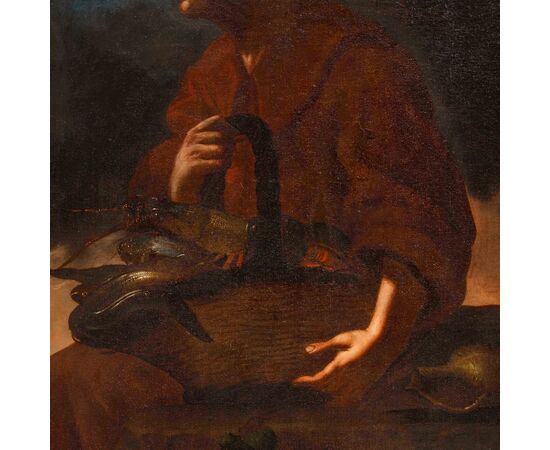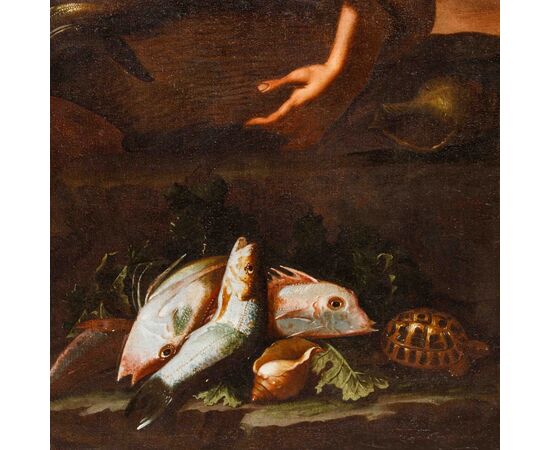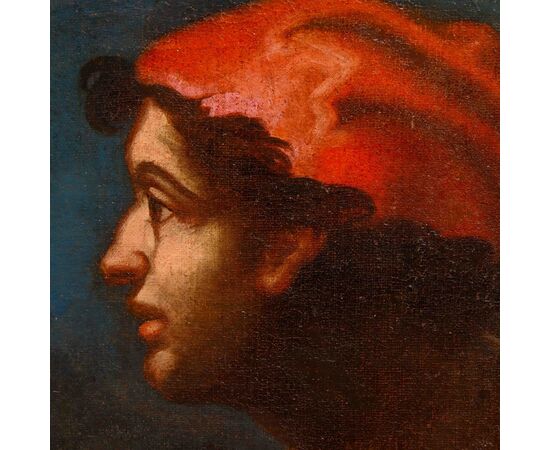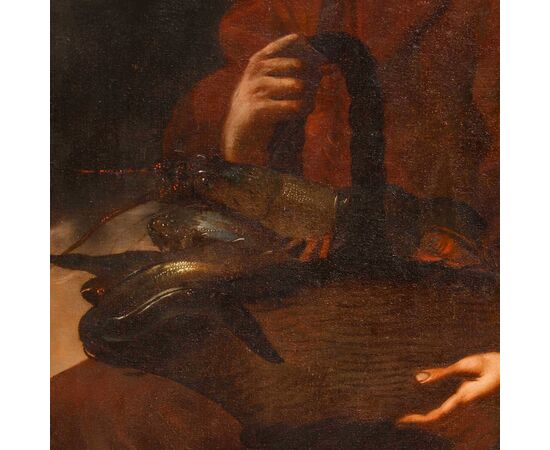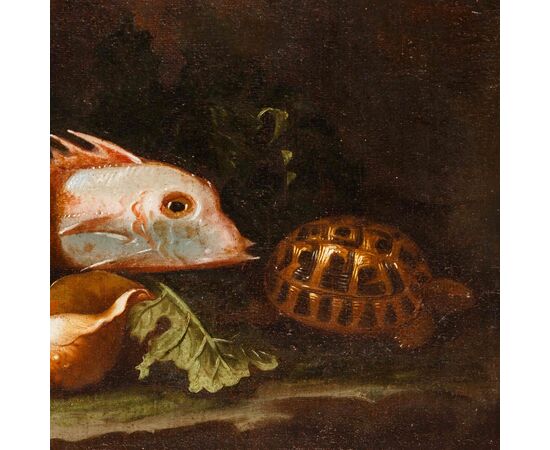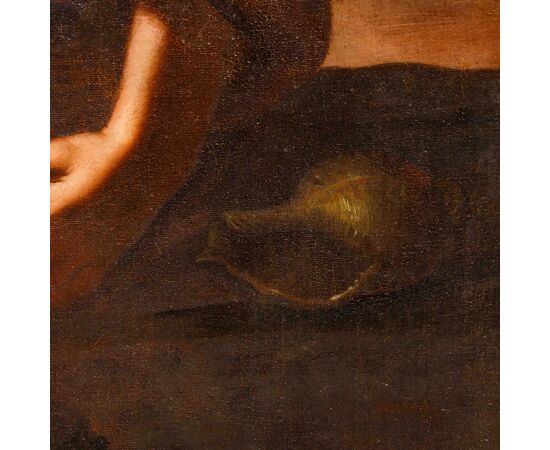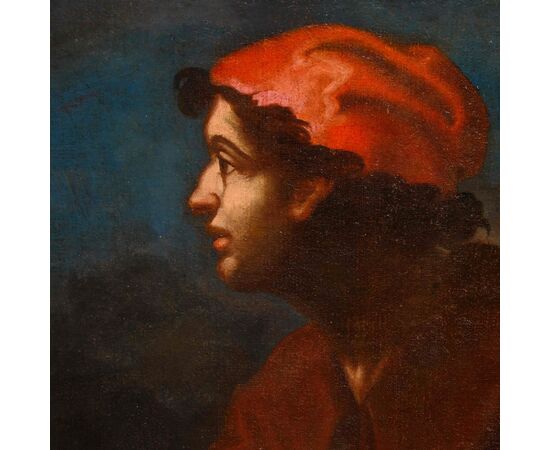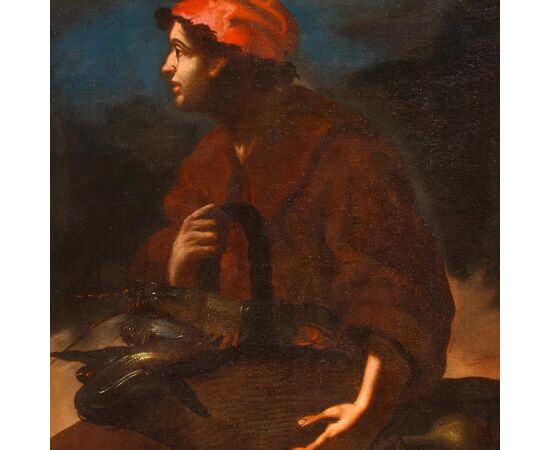Alessandro de' Pesci (active until 1750), Fish Seller
Alessandro de' Pesci (active until 1750)
Fish Seller
Oil on canvas, 137 x 84 cm
Critical Note by Prof. Alberto Crispo
The still life with a fish theme can be chronologically framed between the end of the 17th and the beginning of the 18th century, while the school to which it can be referred is the Neapolitan one. The work finds many points of contact with the treatment of this genre carried out in Naples during the 17th century and then continued in the following century, often also through the heirs of families and workshops that had established themselves both in the city and outside, including the De Caro, the De Matteis, and the Recco families. In the canvas, a section of still life stands out from the rest of the work, positioning itself in the lower part and enjoying greater lighting than the seated fisherman who occupies the upper portion with his figure. If one observes the rendering of the scales or the carapace of the turtle, another recurring subject in the still lifes of these artists and other fellow countrymen such as Baldassarre de Caro, one finds a drafting with small, clear, and shimmering touches that we find in the works of what, precisely, has long been considered the Master of dotted fish. The name of this anonymous artist has been assigned to many still life works with fish and crustaceans as protagonists, which have often been attributed to the hand of Elena Recco, daughter of the painter Giuseppe, who in turn was taught to paint by his father and uncle. This characteristic led a part of the critics to develop the aforementioned pseudonym, also used for another personality of the same period, namely Alessandro de' Pesci, an artist to whom this canvas can be referred and who was active in Rome in the second half of the eighteenth century. Few of his works are preserved, and his biography is still incomplete in many respects today. The canvases that are now in the Flesh Museum in Ajaccio, an institution created thanks to the donations of the Corsican cardinal Joseph Fesh, who collected an immense collection of works of art during his stay in Rome as a cardinal. In Alessandro's canvases, we find the pointillist drafting of color, the arrangement and pose of the marine subjects of the work in question, with a firmer and more compact drafting and with clearer and sharper tones than those of Reco, with whom he has long shared the same pseudonym. Surely, both carefully observe the teachings and stylistic features of the Neapolitan school, for the use of an intense chiaroscuro that is suddenly broken by areas of more intense light, for the choice of genre, and for a naturalism of remote Caravaggesque ancestry; furthermore, the figure of the fisherman also stands out from a stylistic and pictorial point of view from that of the still life below, described with a lenticularism and enhanced by the greater lighting, almost to sanction a sort of separation between two subjects united in the same work. This peculiarity could recall the collaborations between Giuseppe Recco, father of the aforementioned Elena, and Luca Giordano, a Neapolitan painter among the greatest exponents of the Baroque period; in fact, the work is attributable to that strand in which Giuseppe Recco painted paintings with fish, leaving the realization of human figures to Luca Giordano: this work could derive from those examples.

